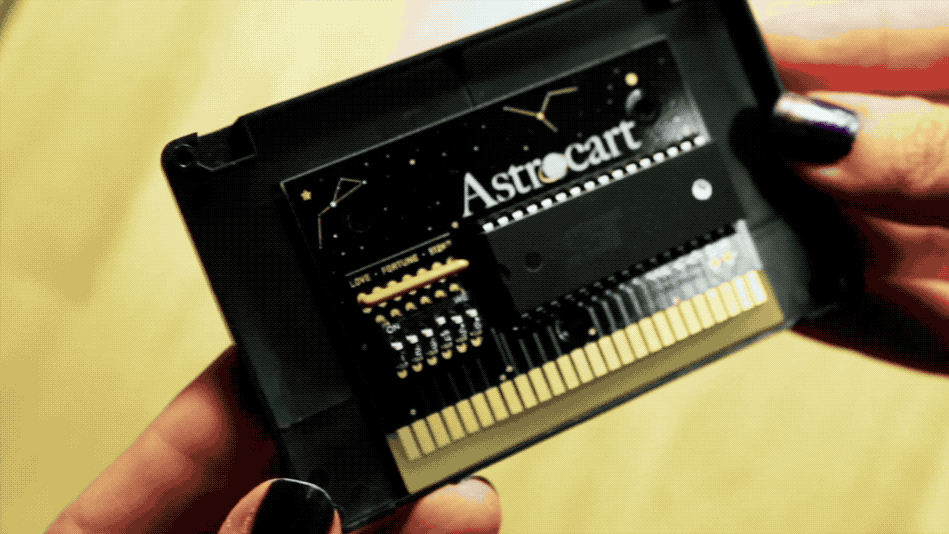| layout | title | intro |
|---|---|---|
project.njk |
My work |
My artistic practice spans video art, glitch, homebrew development, electronics, and computing history. These interests are connected by my dream to dissolve the monoculture of computing nostalgia, particularly through creating ultrafemme and commercially unviable electronic artifacts and forgeries. |
FEMICOM Museum is a physical and digital archive dedicated to preserving, celebrating, and remixing the history of femme, girly, and cute electronic games and toys.
Featured on PBS Game/Show, the Adam Ruins Everything Podcast, the Videogame History Foundation podcast, The Guardian, Daily Texan, Killscreen, Killscreen (again), Retronauts, ROM Chip, Missy Magazine, and The Mary Sue.
A videopoem made without computers. Inspired by theatrical interludes from the 1960s and the Sandin Image Processor, Make-believe was created with vintage hardware mixers, video feedback, practical optical effects, and VHS tapes.
Exhibited at Dadalabs (Austin, Texas) and, in part, at Chipfest Cyberspace 12 (Twitch).
 Clip from Make-believe
Clip from Make-believe
A suite of open-source development tools and resources for creating homemade software for the obscure Bally Astrocade computer and home game console, released in 1977.
- Astropaint is a browser-based paint application for creating images that can be displayed on Bally Astrocade hardware. It allows for custom palette selection and exports Z80 assembly.
- astroimg is a command-line tool that converts images to a format suitable for display on Bally Astrocade hardware. The tool outputs both graphics data and an Astrocade ROM. Cross-platform and written in Python.
- demos illustrate how to display graphics and text, play sound, and use controller inputs. These demos have also been adapted for use in Steven Hugg's 8bitworkshop IDE.
- compileAndLaunch.bat is a small script that simplifies the Astrocade development loop when using the zmac compiler and MAME emulator.
Additionally, a few copies of Astrocart were produced in collaboration with Andrew Reitano. Used with an EPROM burner, this development cartridge can be used for playing homemade software on the Bally Astrocade hardware.
 Astrocart development cartridge for the Bally Astrocade
Astrocart development cartridge for the Bally Astrocade
ConnectedNES is a DIY device that allows a standard Nintendo Entertainment System (1985) to receive data over wireless internet. Instructions and firmware for building the device, along with a Twitter client, are available as open-source software. You can read more about the development of ConnectedNES here.
Exhibited at OSCON 2016 (Austin, Texas), XOXO 2016 (Portland, Oregon), International Nodebots Day 2016 (Chicago, Illinois), and Radical Networks 2016 (New York City, New York).
Featured on The Verge and Killscreen.
Electronic Sweet-N-Fun Fortune Teller is an original game for the Nintendo Entertainment System. Inspired by girls' love horoscope magazines, early web-based "love calculators," and handheld games like Bandai Herpit, it provides the player with daily horoscopes and love compatibility scores. It offers a view of NES-era gaming had it been developed for stereotypical girls' interests instead of stereotypical boys' interests. A limited run of NES cartridges were produced and sold, and the NES ROM is available for purchase ($1.99 USD) here.
Exhibited at Now Play This Festival 2020 (London, England) (cancelled), the Bullock Texas State History Museum (Austin, Texas), and the Visual Arts Center (Austin, Texas).
Featured on The Guardian, Boing Boing, Killscreen, Killscreen (again), Memory Insufficient, and The Journal of Peer Production.
TRACK+FEEL II is an interactive music and dance game for the Nintendo Entertainment System. Two players work together to create glitchy music and graphics by using a game controller and a Power Pad dance mat controller. The NES ROM for TRACK+FEEL II is available as name-your-price, as is the TRACK+FEEL II remix EP.
Exhibited at IndieCade (Los Angeles, California), TEDxAustin (Austin, Texas), Reset: Post-consumer Gamer Culture (Winnipeg, Canada), Juegos Rancheros (Austin, Texas), and the Thinkery (Austin, Texas).
Featured on Austin Chronicle and Ada.
Hello Kitty Land is a ROM hack of Super Mario Bros. for the Nintendo Entertainment System. Borrowing elements from various Sanrio games, it reimagines the iconic pack-in title in order to ask how video game history might be different if video-game consoles in the 1980s and 1990s had been marketed to girls instead of boys. A supplementary article can be found on FEMICOM Museum.
Exhibited at Salon Ludique (Montreal, Quebec).
Featured on the Wall Street Journal, Killscreen, Memory Insufficient, and Ada.




